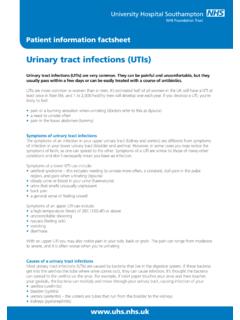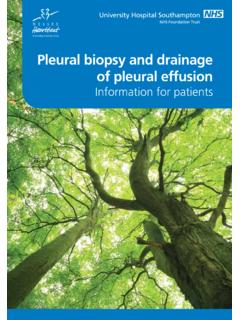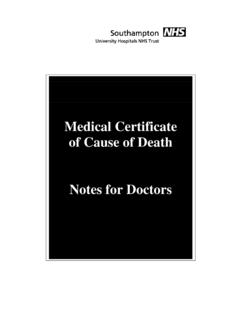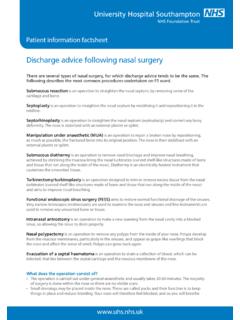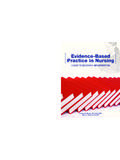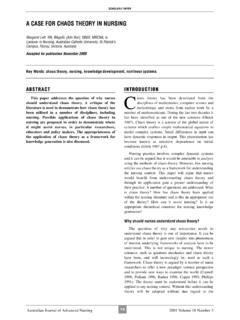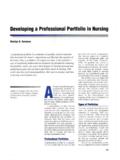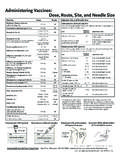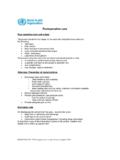Transcription of Practice Education Forum - UHS
1 A Review of the literature into Dyslexia in nursing Practice . & 2007. Practice Education Forum A Review of the literature into Dyslexia in nursing Practice FINAL REPORT C Dale, F Aiken January 2007A Review of the literature into Dyslexia in nursing Practice . & 2007 2 ACKNOWLEDGEMENTS The authors wish to thank all those who supported the development of this review. In particular we would like to thank the Practice Education Forum of the Royal College of nursing for commissioning this project and for their ongoing advice; also Avril Stobbart, Janet Skinner, Joanne Guy, Lucy Steiner and Alex Barnes for their insights and advice. A Review of the literature into Dyslexia in nursing Practice . & 2007 3 CONTENTS ACKNOWLEDGEMENTS.
2 2 1 INTRODUCTION .. 5 2 7 3 SEARCH METHODS AND 9 Search strategy and 9 Results .. 11 4 ADULT DYSLEXIA .. 14 Being dyslexic .. 14 16 Screening 17 17 Stress .. 18 Adult 19 In higher 19 Career options .. 20 5 POLICY AND 23 National guidelines and strategy .. 23 Professional standards .. 23 Legislative requirements .. 26 Higher Education .. 27 6. ISSUES IN CLINICAL 29 29 29 Fitness to 31 Patient safety .. 35 Numeracy .. 37 Record-keeping .. 39 Manual skills .. 40 40 Teamwork .. 40 7 THE EMPLOYER S RESPONSIBILITIES .. 42 Knowledge of duties to the dyslexic employee .. 42 43 Reasonable adjustments .. 44 Justification .. 48 Terminating employment.
3 50 Employment appeal 50 A strategic response .. 52 8. ASSISTANCE .. 55 Financial support .. 55 Psychological and emotional support .. 56 Equipment and 59 Accessible e-learning .. 60 9 INTERVENTIONS .. 62 10. 66 11. 67 12. 71 REFERENCES .. 75 USEFUL RESOURCES .. 85 APPENDIX 1 Workplace adjustments .. 87 APPENDIX 2 Case studies .. 89 A Review of the literature into Dyslexia in nursing Practice . & 2007 4 Tables 1. Matrix of issues for literature review 10 2. Hierarchy of evidence 11 3. Fitness for purpose: relevant guidance and reviews 31 4. Strategies for overcoming obstacles 63 Figures 1. Possible forms of support for the dyslexic nurse 65 2. Factors affecting the employment of the dyslexic clinician 68A Review of the literature into Dyslexia in nursing Practice .
4 & 2007 5 1 INTRODUCTION The RCN Practice Education Forum recognised in 2006 that this project would represent the interests of nurses and nursing as research has shown that between 3% and 10% of the nursing population admit to having dyslexia (Sanderson-Mann 2005). The aim of the project was to develop standards to help improve patient care whilst supporting, developing and protecting nurses with dyslexia in Practice . Members of the Forum will be involved in the production of standards. The scope of the project spanned both pre and post registration students across all aspects of nurse Education . The aims of the project were to: 1) Undertake a literature review and analysis of available research relating to dyslexia in nursing Practice and comparable professions medicine 2) Develop a standard of best Practice on how reasonable adjustment can be achieved for nurses with dyslexia in Practice The search covered literature published between 2000 and 2006 inclusive.
5 However, some unpublished data has also been included as there are some initiatives to address nurses and AHPs with dyslexia that are being or have been evaluated recently. References are made to policy literature published by the Department for Education and Employment, Department of Education and Skills and the Department of Work and Pensions in order to provide the policy context for students in Higher Education and health professionals with dyslexia. A Review of the literature into Dyslexia in nursing Practice . & 2007 6 The report includes: 1. A note on definition 2. A description of the search strategy and results. 3. A description and analysis of the issues identified in the literature which includes adults with dyslexia or dyscalculia more generally, to provide a broader context and review of literature .
6 4. A description of national policy and guidelines, professional standards, guidelines for good Practice in Higher Education and relevant legislative requirements to set the review in context. 5. Discussion of the employer s responsibilities to the dyslexic clinician 6. An overview of the possible clinical issues for the dyslexic student and professional. 7. Consideration of evidence-based interventions and assistance for the dyslexic clinician. 8. Discussion of the findings and recommendations 9. Case studies are given in the appendices in order to illustrate the variety of issues arising in the report. The findings will also be of clear benefit to Allied Health Professionals (AHPs).
7 A Review of the literature into Dyslexia in nursing Practice . & 2007 7 2 DEFINITIONS The definition of dyslexia adopted for the report is the definition in DfES s (2004) A Framework for Understanding Dyslexia:- A specific difficulty, typically characterised by an unusual balance of skills. Dyslexia affects information processing (receiving, holding, retrieving and structuring information) and the speed of processing information. It therefore has an impact on skills such as reading, writing, using symbols and carrying out calculations. Dyslexia is often referred to as a specific learning disability (SpLD) and is categorised as usually developmental rather than acquired. The definition of dyscalculia which is related to dyslexia is:- A condition that affects the ability to acquire arithmetical skills.
8 Dyscalculic learners may have difficulty understanding simple number concepts, lack an intuitive grasp of numbers and have problems learning number facts and procedures. (The National Numeracy Strategy: Guidance to Support Pupils with Dyslexia and Dyscalculia 2001) It is important to note that dyslexia affects people to varying degrees, and that individuals may be strong in some areas while weak in others. Some of the strengths include being intuitive, good at visualisation, being creative, good at seeing the whole picture, good at making links between things and seeing connections (The National Institute of Adult Continuing Education - England and Wales NAICE 2006). Perceptions of dyslexia may vary: the traditional medical model sees people as recipients of a service and their particular disability as being the problem.
9 The A Review of the literature into Dyslexia in nursing Practice . & 2007 8 social model of disability sees the person as disabled by society and the impairment itself not being the problem but rather the environment that needs to be modified to support the person. The nursing and Midwifery Council (NMC) and the Disability Discrimination Act (DDA) use the terminology that reflects the social model of disability (NMCb 2006). A Review of the literature into Dyslexia in nursing Practice . & 2007 9 3 SEARCH METHODS AND RESULTS Search strategy and sources There were two components to the search strategy. First, to provide a context and background to the main literature review, the Department of Health and Department for Education and Skills publications lists were searched for policy documents relating to ADULT DYSLEXIA.
10 Secondly, the searches for research and evaluation articles were focused on electronic databases, namely Medline, ASSIA and Cinahl. Professional and academic websites were searched as were professional interest groups. The RCN Library and the British Library were also accessed. Google Scholar was also searched. The time frame for the search was from 2000 2006 as most relevant legislation has been passed within this period; also nursing is a profession which is constantly changing, therefore it is important that a literature review reflects the current climate. The search strategy adopted to access databases was to apply the following search terms: #1 Nurse #2 Health care professional #3 Doctor #4 Healthcare students #5 #1 OR #2 OR #3 OR #4 #6 Health personnel #7 #5 OR #6 #8 Adult Dyslex* #9 Adult Dyscalcul* #10 Adult Learning Disability A Review of the literature into Dyslexia in nursing Practice .



